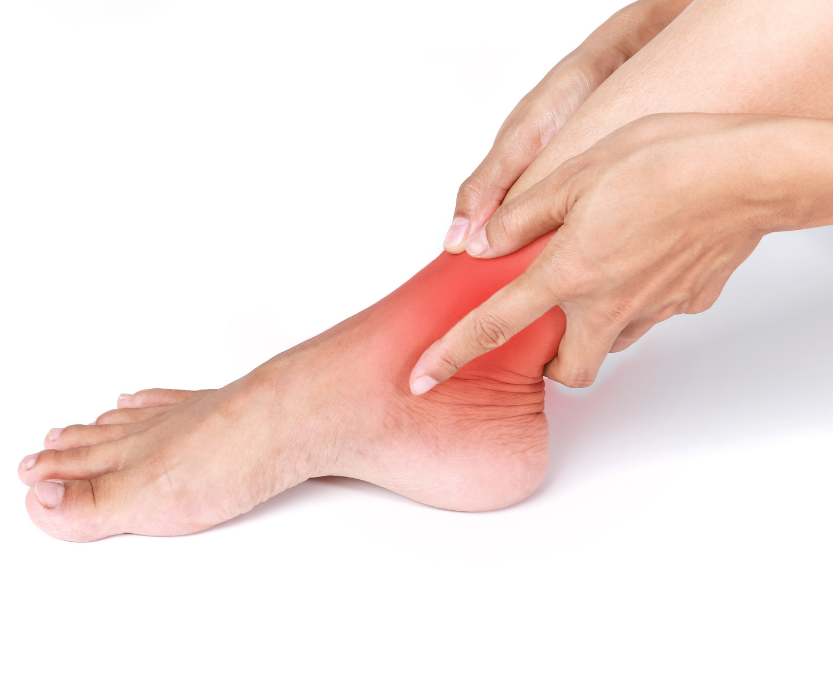
01 Nov Revealed: The Hidden Truths Behind Ankle Sprains

Ankle sprains have got to be one of the things that are taken the most for granted. We haven’t encountered a single person who hasn’t sprained their ankle at some point in their life – even if it’s just a mild to moderate outward roll. Yet there’s a lot more to ankle sprains than meets the eye – and it can have consequences that last decades. Here’s the professional, “insider” look into ankle sprains, written by our podiatrist Jess, who covers:
- Your risk of future ankle sprains when you’ve had one already
- Why you may have chronic ankle instability without realising
- The link between ankle sprains and early osteoarthritis
- The true effect that ankle sprains can have on your quality of life
Ankle sprains are the most common documented disorder of the musculoskeletal system in physically active individuals. They’re so common that many are quick to shrug off an ankle sprain and take a ‘she’ll be right’ mindset. Unfortunately, the truth, as documented by the International Ankle Sprain Consensus, is that ankle sprains can haunt your health with longstanding consequences for years to come – getting worse, not better – if they’re not treated the right way early on.
Our podiatrist, Jess, reviewed the report, which illuminated some powerful – and somewhat shocking – findings. Here’s what you should know.
1. Most patients that have a history of lateral ankle sprain will at some point sustain at least one further sprain.
If you’ve suffered an ankle sprain already, there’s a significantly higher chance of you sustaining another sprain. When we see this in our clinic, it’s often because the cause of the sprain hasn’t been addressed or managed, as is reported to be the case in about half of all ankle sprains. The cause of an ankle sprain ranges from wearing poor quality, unsupportive footwear when moving over uneven ground, a person’s foot type, their gait, and much more.
2. High sprain recurrence rates also lead to the majority of people going on to develop Chronic Ankle Instability.
Aside from more sprains, those that have had an ankle sprain are also more likely to have functional limitations at the ankle, the ongoing feeling that the ankle is giving way, and general ankle weakness that all lead to a condition called Chronic Ankle Instability (CAI).
3. Lingering ankle instability leads to ongoing sensorimotor deficits.
The deficits likely to be suffered by those with ankle instability include diminished reflexes, poorer motor control skills at the ankle, and difficulty perceiving touch, pressure, pain, and the position of the ankle at any given time, and more.
4. Ankle instability can lead to the early onset osteoarthritis of the ankle joint, linking back to the trauma sustained from the sprain.
Osteoarthritis, a degenerative health issue, is shown in the research to be linked to those with a history of ankle sprains. This osteoarthritis hasn’t just been documented in middle-aged and older populations, either – it can occur relatively early in life.
5. Decrease in physical activity leads to a decrease in quality of life.
Ankle sprains and their painful consequences lead to decreased activity levels, which leads to a decreased health-related quality of life. This impacts people on a variety of levels, which is why ankle sprains are considered a significant global healthcare burden.
Key Takeaway: Treat Ankle Sprains Early
 In order to disrupt the injury cycle that escalates from an ankle sprain to recurrent ankle sprains to ankle instability and then to sensorimotor deficits, decreased physical activity, impacted quality of life and an increased risk of ankle osteoarthritis, treating ankle sprains early and effectively is key.
In order to disrupt the injury cycle that escalates from an ankle sprain to recurrent ankle sprains to ankle instability and then to sensorimotor deficits, decreased physical activity, impacted quality of life and an increased risk of ankle osteoarthritis, treating ankle sprains early and effectively is key.
The most effective way we’ve seen ankle sprains prevented is using the EXO-L brace, the world’s only brace that is proven to prevent ankle sprains. This brace plays a role in both initial sprain prevention for those that are high-risk, and preventing recurrence for those that have already sustained a sprain, therefore breaking the injury cycle. It’s important to pair this with proper ankle rehabilitation, which includes working to restore the sensorimotor deficits present.
Need help with your ankles?
We’re proud to be the only team in the Wairarapa specialising in strong, healthy ankles – and the only clinic able to prescribe the world’s leading EXO-L brace, which is helping everyone from retirees to international athletes live without ankle sprains or pain.
Book your appointment by calling us on 06 370 4057 or book your appointment online here.
Read the original publication here.


